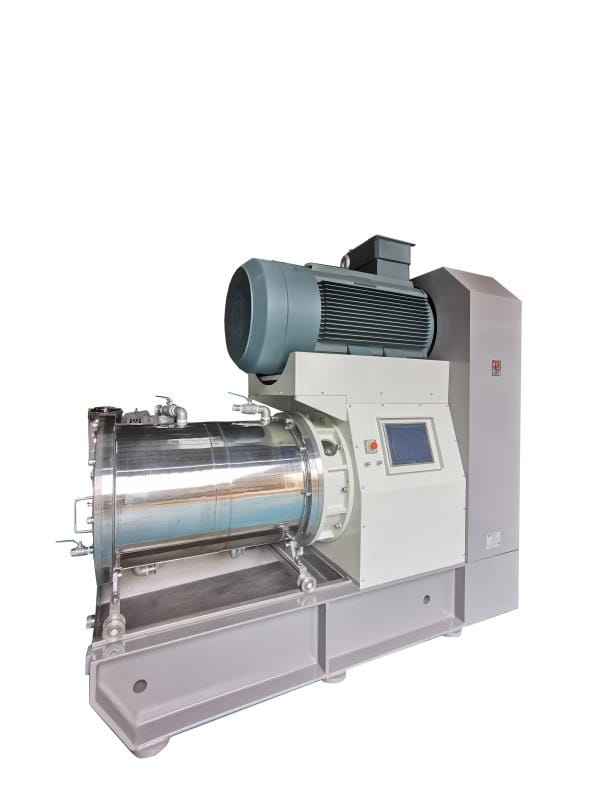Sand mill linear speed, commonly referred to as the rotational speed of the sand mill, has an impact on the efficiency of the machine.
Firstly, the speed of any point on an object moving in a circular path with a fixed axis is termed as "linear speed." It is generally defined as the instantaneous speed that a particle (or points on an object) possesses during curved motion, including circular motion. Its direction follows the tangent to the path of motion, also known as tangential speed. This quantity describes the speed and direction of particle motion during curved motion. The instantaneous speed that points on an object have during curved motion, with its direction along the tangent to the path of motion.

Next, let's delve into how linear speed is calculated. The linear speed of the grinding medium varies at different positions within the sand mill cylinder. The speed is smaller at the axis center and larger at the cylinder wall. The linear speed at any point between these can be calculated using the following formula:
Linear Speed V = 2πωr (unit: meters per second)
π - Pi (3.14159...); ω - Sand mill axis rotation speed (unit: revolutions per second); r - The straight-line distance from the point inside the cylinder to the axis center, equivalent to the radius.
Now, let's explore the relationship between linear speed and the efficiency of the sand mill. Higher linear speed results in greater kinetic energy transferred to the beads by the sand mill, thereby increasing its efficiency. However, is a faster linear speed always preferable for the sand mill? The answer is negative. Excessively high linear speed in the sand mill leads to several drawbacks.
The drawbacks of excessively high linear speed in the sand mill are as follows:
A. Increased speed leads to higher heat generation, causing the machine to heat up rapidly, which might not be suitable for many materials requiring specific temperature conditions.
B. Higher speed results in more significant impacts on the grinding medium in the sand mill, potentially causing the breakdown of the designated grinding media.
C. Elevated linear speed contributes to greater stress on the machine, intensifying wear and tear on its components, demanding higher material quality in manufacturing.
The typical range of linear speed in a sand mill falls between 5-10 m/s (varies among manufacturers based on industry experience, experimental data, and their specific conclusions). The grinding area is confined to a narrow space between the grinding disc and the barrel wall, while other areas primarily contribute to heat generation.
Therefore, horizontal sand mills utilize an appropriate linear speed to concentrate the grinding medium within the working area of the mill.

Submit your demand,
we will contact you ASAP.

Sanxin New Materials Co., Ltd. focus on producing and selling ceramic beads and parts such as grinding media, blasting beads, bearing ball, structure part, ceramic wear-resistant liners, Nanoparticles Nano Powder

